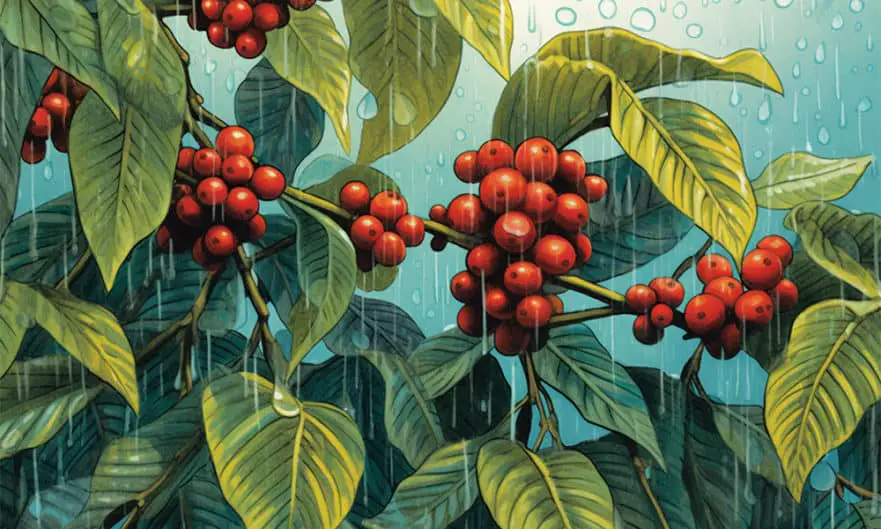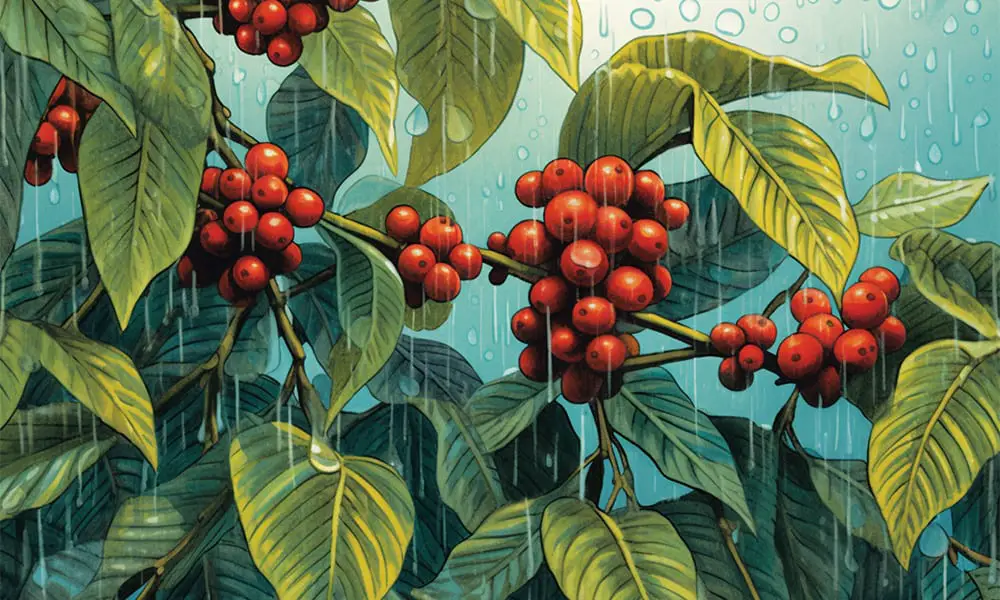
When it comes to the world of specialty coffee, there are numerous factors that contribute to the unique flavors and characteristics of each.
Among these factors, three elements stand out as essential influencers: rain, sunlight, and temperature. Rainfall provides the necessary water for coffee plants to grow and develop, while sunlight fuels the process of photosynthesis, ultimately shaping the beans’ flavor profile.
Temperature, on the other hand, plays a critical role in determining the growth rate, maturation, and overall quality of the coffee beans.
In this blog post, we will delve into the fascinating ways in which rain, sunlight, and temperature impact specialty coffee, unraveling the intricate relationship between these elements and the cup of coffee that graces your mornings.
Let’s start on a journey through the intertwined world of weather and specialty coffee production.
The Effects of Rainfall
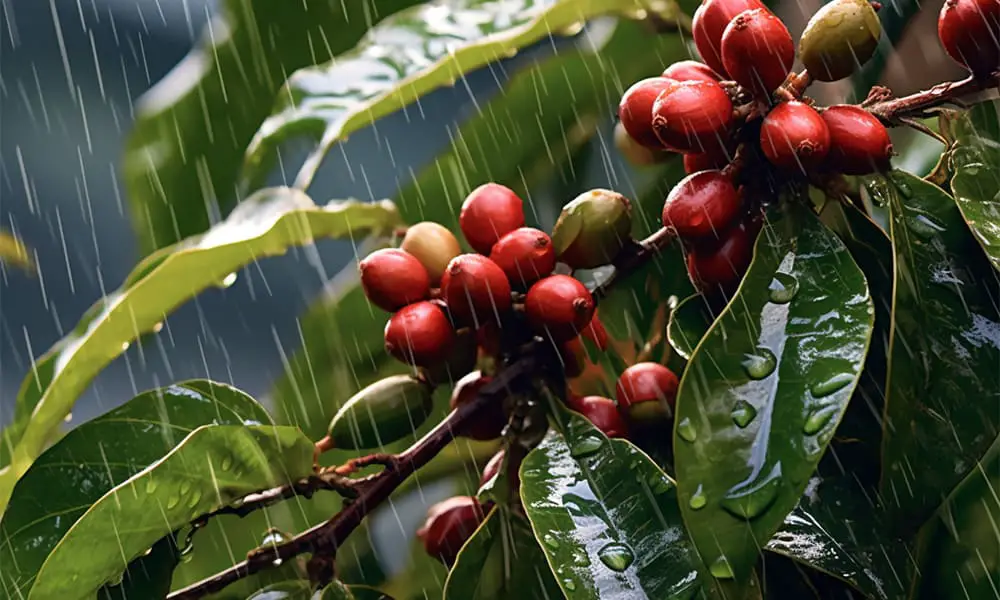
Rainfall, a crucial component of the weather, exerts a significant influence on the growth, development, and flavor profile of specialty coffee. Coffee plants require a specific amount of rainfall to thrive, and variations in rainfall patterns can profoundly impact the quality and characteristics of the beans. Let’s explore how rainfall affects specialty coffee and why it is a critical factor in producing exceptional brews.
The amount and distribution of rainfall throughout the coffee-growing season play a vital role in determining the yield and quality of the coffee crop. Coffee plants typically require a consistent and well-distributed supply of water to flourish.
Adequate rainfall ensures that the soil remains moist, allowing the roots to access essential nutrients and minerals necessary for healthy growth. Insufficient rainfall can lead to water stress, stunting the plants’ growth and negatively impacting the development of the coffee cherries.
Rainfall also influences the flavor complexity of coffee. In regions where rainfall is abundant, the coffee plants receive a sufficient water supply, resulting in a well-developed cherry. This abundant water availability encourages the cherries to grow larger, allowing for a greater accumulation of sugars and organic compounds. As a result, the coffee beans harvested from these regions tend to have a richer, more nuanced flavor profile.
Conversely, regions experiencing less rainfall may face water scarcity issues, leading to smaller and less flavorful coffee cherries. In such areas, the coffee plants may struggle to reach their full potential, resulting in a less pronounced flavor profile. The lack of rainfall can affect the overall balance and complexity of the coffee, potentially leading to a more one-dimensional taste.
Timing is also crucial when it comes to rainfall in coffee cultivation. The coffee-growing process consists of distinct stages, including flowering, fruit development, and maturation. Each of these stages requires specific moisture levels to ensure optimal growth and flavor development.
For example, during the flowering stage, a moderate amount of rainfall is necessary for successful pollination and the formation of healthy cherries. Insufficient rainfall during this critical period can lead to poor fruit set and reduced crop yield.
Furthermore, excessive rainfall can also pose challenges for coffee production. Heavy and prolonged rainfall can cause erosion, waterlogging, and increased vulnerability to diseases and pests. Waterlogged soil can deprive the coffee roots of oxygen, leading to root rot and other detrimental effects on the plants. Excessive rainfall can also dilute the sugars and flavors within the coffee cherries, resulting in a more watery and less desirable cup profile.
Coffee farmers employ various strategies to mitigate the effects of rainfall on specialty coffee. These strategies may include implementing drainage systems to prevent waterlogging, utilizing shade trees to regulate moisture levels, and practicing soil conservation techniques to prevent erosion.
Additionally, farmers may select coffee varieties that are better adapted to the specific rainfall patterns of their region, ensuring the best possible outcomes in terms of flavor and yield.
Rainfall is a vital factor in the cultivation of specialty coffee. It affects the growth, flavor, and overall quality of the coffee beans. Adequate and well-distributed rainfall supports healthy plant growth and contributes to a more complex and desirable flavor profile.
However, excessive or insufficient rainfall can present challenges and impact the final cup characteristics. Coffee farmers and industry professionals understand the importance of managing rainfall patterns to produce exceptional specialty coffees.
The Effects of Temperature
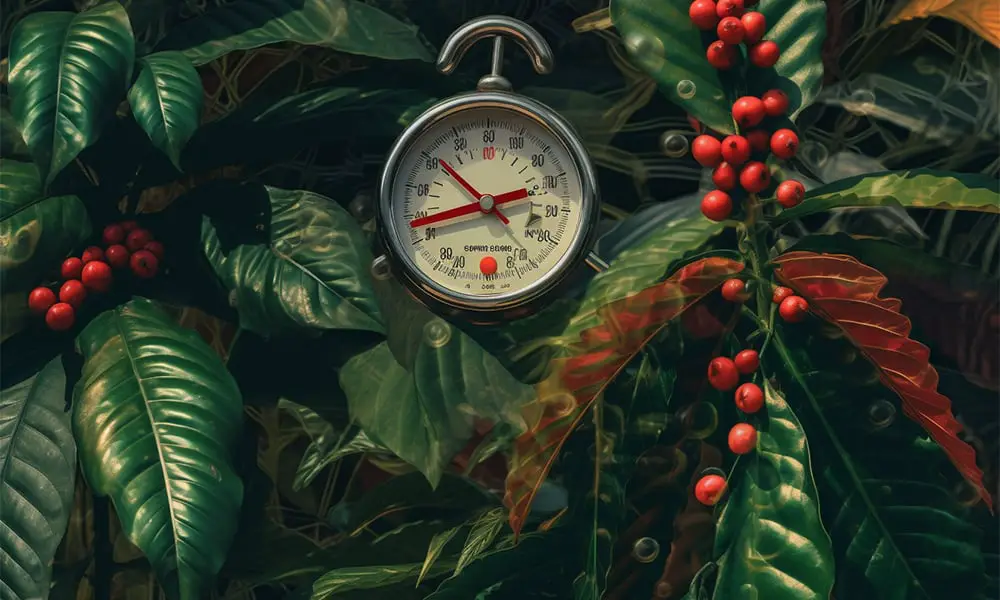
Temperature, a crucial environmental factor, plays a significant role in shaping the growth, development, and flavor of specialty coffee. Coffee plants thrive within a specific temperature range, and variations in temperature can have profound effects on the quality and characteristics of the beans. Let’s delve into how temperature affects specialty coffee and understand why it is a critical factor in producing exceptional brews.
The ideal temperature range for coffee cultivation falls between 60°F and 70°F (15°C and 24°C). Within this range, coffee plants experience optimal growth and metabolic processes. Temperatures outside of this range can have adverse effects on coffee plants, influencing their physiology and ultimately impacting the quality of the beans.
High temperatures can cause stress to coffee plants, leading to a variety of issues. Excessive heat can accelerate the plant’s metabolic processes, resulting in accelerated maturation and a decreased growing period. This can negatively impact the flavor development of the coffee cherries, leading to a less complex and potentially unbalanced cup profile.
Furthermore, high temperatures can cause increased transpiration rates, leading to water loss and dehydration of the plants. In extreme cases, prolonged heatwaves can even result in wilting and plant death, causing significant damage to the coffee crop.
On the other hand, low temperatures can also pose challenges to specialty coffee production. Coffee plants are sensitive to frost and freezing temperatures, which can cause severe damage to their leaves, branches, and fruits.
Frost can lead to the death of coffee plants and a complete loss of the harvest. Even mild cold temperatures can slow down the metabolic processes of the plants, prolonging the maturation period and potentially delaying the harvest. Such delays can affect the overall flavor development and complexity of the coffee beans.
Moreover, temperature fluctuations throughout the day and between seasons can impact the coffee plants’ growth patterns and flavor profiles. Diurnal temperature variations, where the temperature fluctuates between daytime warmth and nighttime coolness, are particularly beneficial.
These variations contribute to the development of more complex flavors in coffee, as the plants experience changes in enzyme activity and metabolic processes. The distinct day-night temperature cycles encourage the accumulation of sugars and organic compounds, enhancing the coffee’s sweetness, acidity, and overall flavor balance.
Coffee farmers employ various strategies to mitigate the effects of temperature on specialty coffee. They may choose coffee varieties that are better adapted to specific temperature ranges and microclimates. Shade trees are often planted in coffee plantations to provide a cooler microclimate and protect the coffee plants from direct sunlight and extreme temperatures.
Irrigation techniques can also help regulate temperature and provide additional moisture during periods of heat stress. Furthermore, shade coverings, such as nets or canopies, can be used to protect coffee plants from frost and low temperatures.
Temperature is a critical factor in the cultivation of specialty coffee. The optimal temperature range allows coffee plants to thrive and develop their full flavor potential. High temperatures can accelerate maturation and result in unbalanced flavors, while low temperatures can cause frost damage and delay ripening. Diurnal temperature variations contribute to the complexity and balance of flavors in specialty coffee.
The Effects of Sunlight
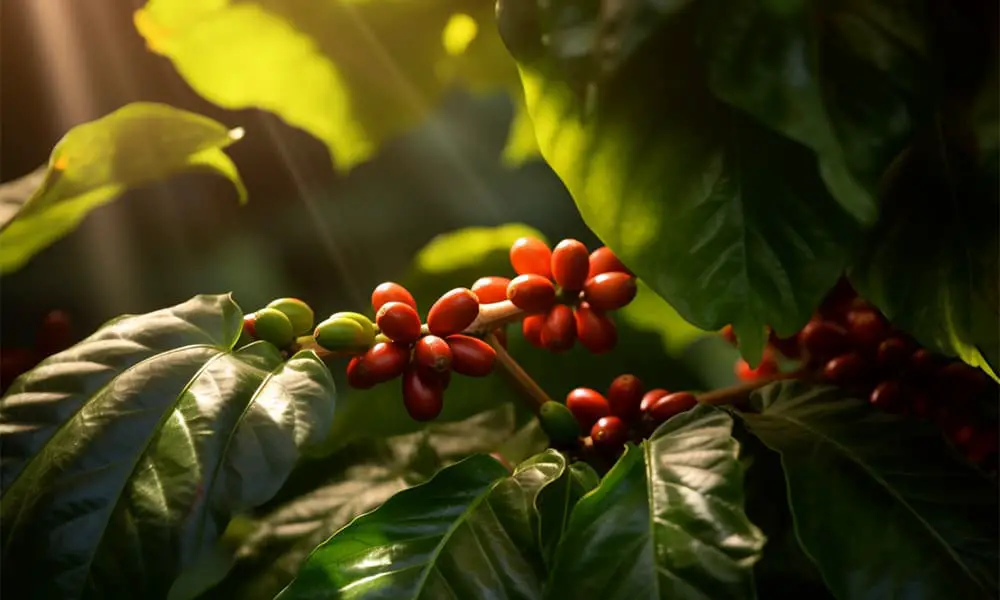
Sunlight, a key component of the coffee plant’s growth process, plays a significant role in the cultivation and development of specialty coffee. The intensity, duration, and quality of sunlight can have profound effects on the growth, flavor, and quality of the coffee beans. Let’s explore how sunlight influences specialty coffee and understand its importance in producing exceptional brews.
Sunlight is essential for photosynthesis, the process through which plants convert light energy into chemical energy to fuel their growth. Coffee plants require a specific amount of sunlight to thrive and produce high-quality beans.
Generally, coffee plants prefer a moderate amount of sunlight, known as partial shade or dappled sunlight. This means that the coffee plants thrive when they receive filtered or diffused sunlight, rather than being exposed to direct, intense sunlight all day long.
Excessive exposure to intense sunlight can lead to stress and negative effects on coffee plants. When coffee plants receive too much direct sunlight, it can result in sunburn or scorching of the leaves and cherries. This can cause damage to the plant’s tissues and affect its overall health.
Sunburnt leaves may turn yellow or brown, and sunburnt cherries can lead to uneven ripening and off-flavors in the beans. Additionally, excessive sunlight can increase the transpiration rate of the plants, causing water loss and dehydration, which can impact the plant’s growth and development.
Conversely, insufficient sunlight can also have detrimental effects on specialty coffee. Coffee plants require a certain level of light energy to carry out photosynthesis effectively. Insufficient sunlight can slow down the plant’s metabolic processes, resulting in reduced growth, delayed maturation, and lower yields. The lack of sunlight can also lead to the production of beans with less complexity in flavor and a weaker cup profile.
The duration of sunlight exposure throughout the day is another crucial factor. Coffee plants thrive in regions where there is a balance between sunlight and shade. Too much direct sunlight during the hottest hours of the day can be detrimental to the plants.
Therefore, the presence of shade trees or other forms of shade coverings in coffee plantations is beneficial. Shade provides a more balanced and regulated light environment for the coffee plants, protecting them from excessive heat and ensuring a more gradual and controlled photosynthesis process.
Moreover, the quality of sunlight can influence the flavor development of specialty coffee. Different wavelengths of sunlight, particularly in the blue and red spectrum, can trigger specific physiological and biochemical responses in coffee plants.
These responses can affect the synthesis of flavor compounds and the accumulation of sugars in the beans. For instance, certain wavelengths of sunlight can enhance the production of sugars, contributing to a sweeter and more balanced cup of coffee.
Coffee farmers carefully manage the exposure of coffee plants to sunlight to optimize flavor development and yield. They strategically plant shade trees or use shade nets to create the ideal microclimate for the coffee plants. This allows for proper light filtration and regulation, protecting the plants from excessive sunlight and ensuring a favorable balance between light and shade.
Additionally, farmers may implement pruning techniques to control the density of foliage and optimize sunlight penetration within the plant canopy.
Sunlight is a crucial factor in the cultivation of specialty coffee. The right amount and quality of sunlight contribute to the growth, development, and flavor complexity of coffee beans. While excessive sunlight can lead to stress and negative effects on the plants, insufficient sunlight can result in slower growth and reduced flavor complexity.
By managing the exposure to sunlight through shade and proper agricultural practices, coffee farmers can ensure the production of high-quality specialty coffees with distinctive flavor profiles.
Final Thoughts
The effects of rain, sun, and temperature on specialty coffee are profound and play a vital role in shaping the flavors and quality of the final product. Rainfall ensures the availability of water for coffee plants, contributing to their growth and development.
Sunlight acts as the energy source for photosynthesis, influencing the production of sugars and essential compounds within the coffee cherries. Temperature, both in terms of overall climate and seasonal variations, affects the maturation process, flavor development, and overall quality of the coffee beans. Understanding and harnessing the intricate relationship between these weather elements and specialty coffee production is crucial for coffee farmers, roasters, and enthusiasts alike.
By appreciating the impact of rain, sun, and temperature, we gain a deeper appreciation for the complexity and uniqueness of specialty coffee. So, the next time you take a sip of your favorite specialty brew, remember the journey it has undergone, influenced by the rain that quenched its thirst, the sun that fueled its growth, and the temperature that shaped its character.
Here’s to the incredible interplay of nature and flavor that makes specialty coffee a true delight for our senses.

